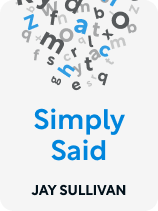

This article is an excerpt from the Shortform book guide to "Simply Said" by Jay Sullivan. Shortform has the world's best summaries and analyses of books you should be reading.
Like this article? Sign up for a free trial here .
Are you a good listener? Why is listening more important than talking?
People want to be heard. We want to feel like someone cares about what we have to say. Therefore, effective listening is a skill that’s vital for both business and life. Not only does it help us understand the other person better, but it helps them understand us better as well.
Here’s how to listen well, according to communication expert Jay Sullivan.
Jay Sullivan: How to Listen Effectively
Effective listening skills enable you to understand the other person and gain their trust and respect. Jay Sullivan, the author of Simply Said, recommends that you treat a conversation not as an opportunity to grandstand but as a chance to learn more about the other person’s needs. For example, if you’re in a client meeting, keep asking questions until you uncover useful information.
The type of questions you ask will depend on your objective:
- Ask closed questions if you need specific information from the other person—for example, “Can you complete this by 4 p.m. on Thursday?”
- Ask open-ended questions if you want a deeper, nuanced response—for example, “Why do you think that is?” It’s also a good opportunity to show the other person that you’re there for them by asking questions like “What can I do to help?”
(Shortform note: Keep in mind that you may have to read between the lines when it comes to their answers—people tend to respond differently based on their status or level of power in relation to yours. Culture also plays a part: For example, Asian cultures tend to be disagreement-avoidant because they believe that disagreeing can damage relationships.)
If you’re unsure about what the other person is trying to say, clarify using three steps:
- Step 1: Start with an introductory phrase (“If I understood it correctly…”).
- Step 2: Restate what they said. You can use the exact words they used or, if they didn’t say it clearly, rephrase it to reflect their message.
- Step 3: End with a question to confirm your understanding (“Did I get that right?”).
| Listening to People From High-Context Cultures Sullivan writes that part of listening is asking questions to clarify what the other person said. This is especially important in what Erin Meyer calls “high-context” cultures like Japan: In The Culture Map, she describes a high-context culture as one where communication doesn’t occur at face value. Both speaker and listener assume that not all relevant information has been clearly stated, so you have to read between the lines. (In contrast, the US is a “low-context” culture, where people communicate in a straightforward manner.) When conversing with someone from a higher-context culture than yours, Meyer recommends that you:Listen closely for subtext, and keep asking questions until you understand their exact message.Take some cues from their body language (though body language would also depend on culture.) Adjust your mindset. If you’re used to a low-context culture, someone from a high-context culture might seem like a bad communicator. Keep in mind that their communication style works for their culture.When taking notes, explain that it’s a cultural difference—those from high-context cultures might see note-taking as a sign of distrust. |

———End of Preview———
Like what you just read? Read the rest of the world's best book summary and analysis of Jay Sullivan's "Simply Said" at Shortform .
Here's what you'll find in our full Simply Said summary :
- A blueprint for effective business communication
- How to create and deliver memorable presentations
- How to write documents and emails that people will actually read






